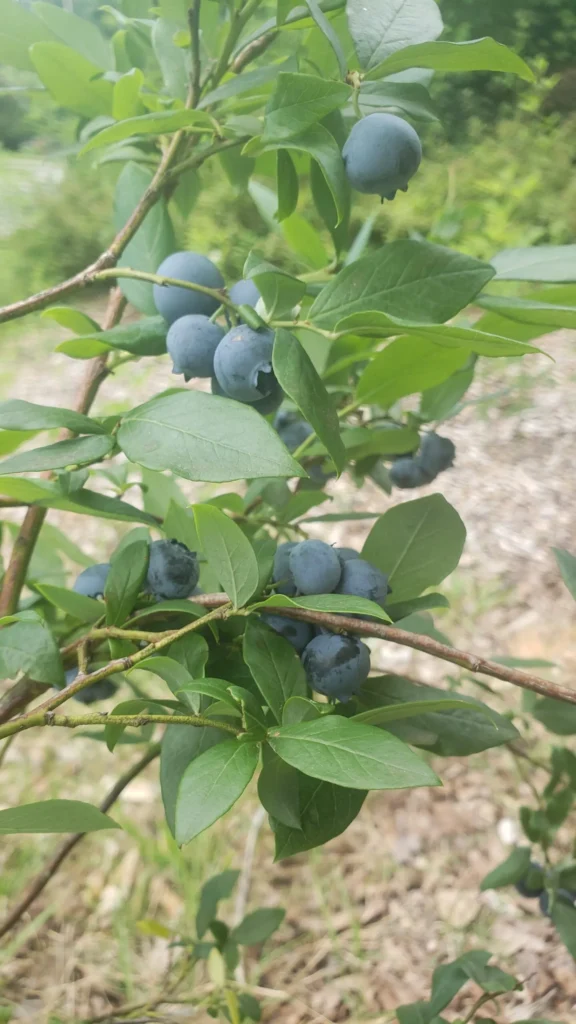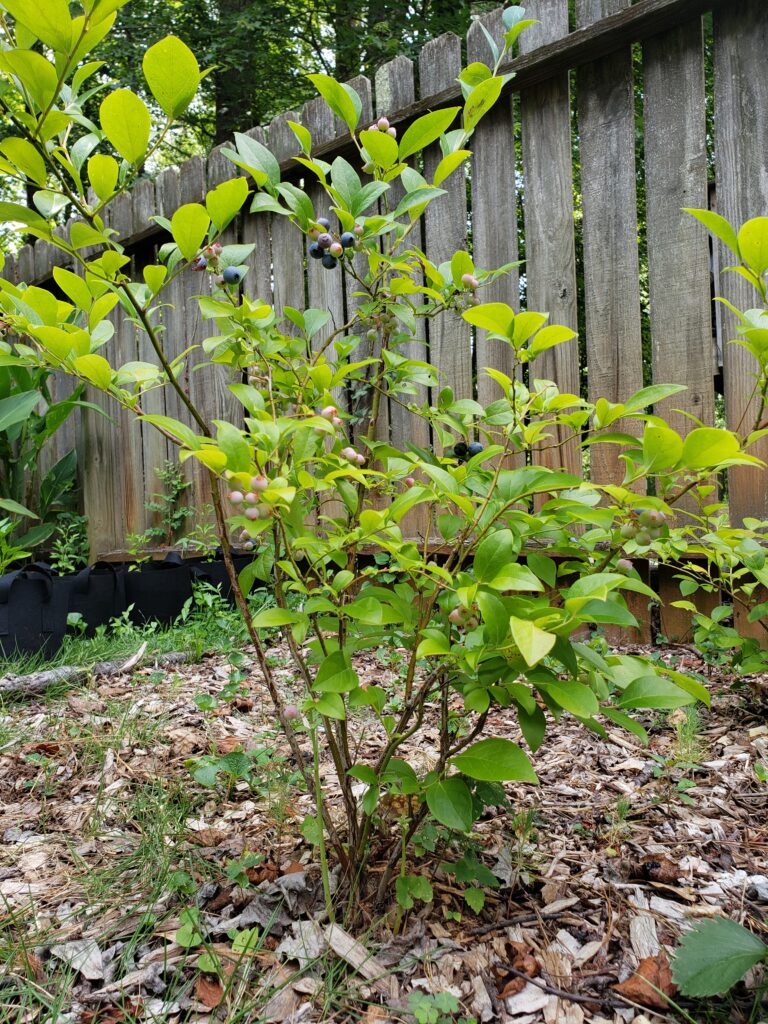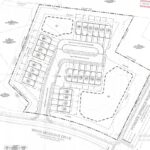Blueberries are a delightful and nutritious addition to any garden, and they thrive particularly well in Georgia’s Zone 8a climate. Whether you’re new to gardening or a seasoned pro, this guide will provide you with all the tips and tricks you need to successfully grow blueberries, including information on water, soil acidity, mulching, and pest management.

1. Selecting the Right Varieties In Zone 8a, Southern Highbush and Rabbiteye blueberries are the best choices. Southern Highbush varieties, such as ‘Star,’ ‘O’Neal,’ and ‘Misty,’ are early producers. Rabbiteye varieties like ‘Brightwell,’ ‘Tifblue,’ and ‘Climax’ are more heat-tolerant and well-suited for the region.

2. Soil Preparation and Acidity
- Soil Acidity: Blueberries require acidic soil with a pH of 4.5 to 5.5. Test your soil pH before planting and amend it if necessary. Use elemental sulfur or peat moss to lower the pH.
3. Planting Blueberries
- Spacing: Plant blueberry bushes 4-6 feet apart to allow for proper air circulation and growth. Dig a hole twice as wide and just as deep as the root ball, and backfill with a mix of soil and compost.
4. Watering
6. Fertilizing
- Why Prune: Pruning helps to maintain plant health, encourage new growth, and improve fruit production. It also allows better air circulation and light penetration.
- How to Prune: Remove dead or diseased branches, as well as any weak or crossing stems. Prune annually in late winter before new growth begins.
9. Harvesting
- How to Harvest: Pick blueberries in the morning when they are cool. Handle them gently to avoid bruising and refrigerate promptly.
Conclusion
Growing blueberries in Georgia’s Zone 8a is a rewarding experience that yields delicious, homegrown fruit. By following these guidelines on soil preparation, watering, mulching, and pest management, you can ensure a healthy and productive blueberry harvest. Enjoy the sweet, tangy taste of fresh blueberries straight from your garden!
Happy gardening!









